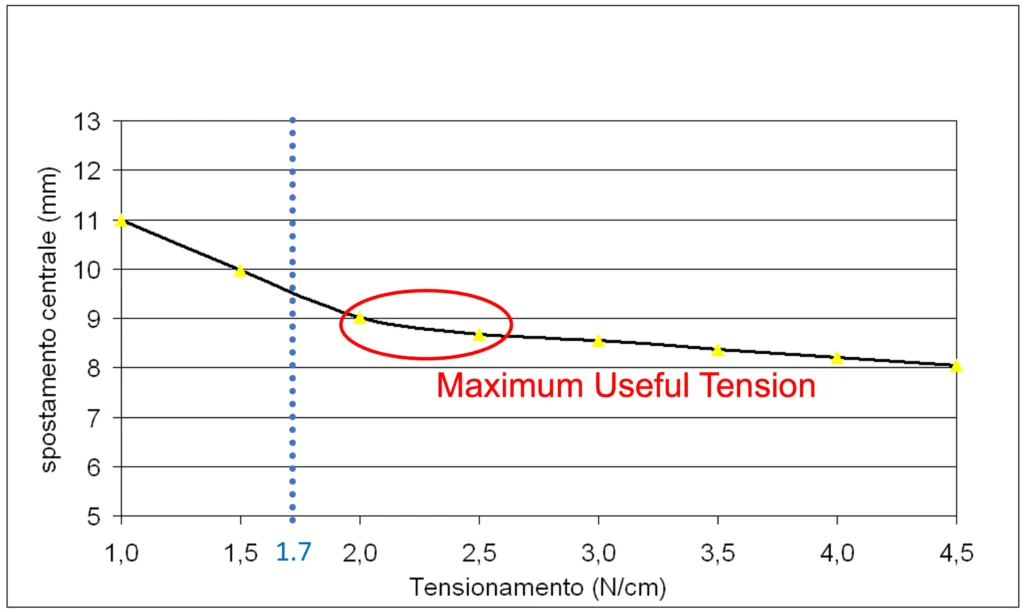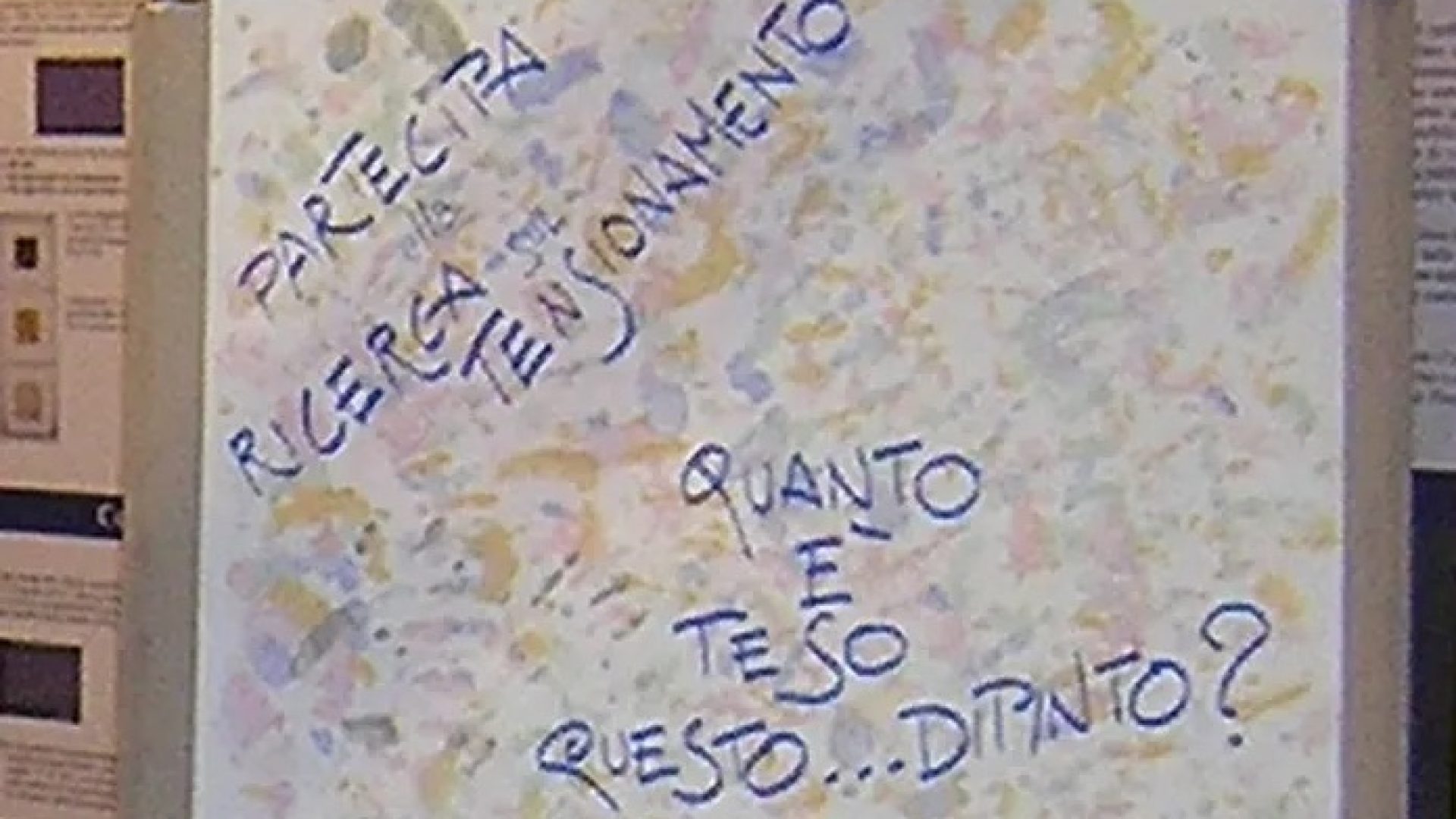A survey involving 106 mid-career paintings conservators recorded the value of tension they judged correct for the same mockup painting. The survey was carried out between 2004 and 2006 by Antonio Iaccarino Idelson and Carlo Serino, with the participation of Mauro Torre and Giorgio Capriotti. The mockup reproduced a modern, unlined painting measuring 1 x 1m.
Results show explicit trends:
- traditional liners chose values above 4 N/cm;
- conservators specializing in contemporary art chose values below 1 N/cm;
- the large majority chose values between 0.8 N/cm and 3.1N/cm.
The weighted mean of choices, divided in intervals of 0.3 N/cm, was 1.7N/cm.
This suggests that most conservators based their choice on an experience-based awareness of the Maximum Useful Tension, preferring values below 2.5 N/cm.

Such values are also in agreement with previous research, as Gustav Berger suggested that conservators intuitively choose tensions between 2 and 3 N/cm [Berger and Russel, 1990], and Alain Roche, who based his research on the reference value of 2 N/cm [Roche, 1993; Roche, 2016].
A low elastic constant of the springs is crucial [Nimmo et al., 1996; Iaccarino, 1996; Iaccarino Idelson, 2005; Mecklenburg, 2021] because it allows the springs to adjust their elongation to that of the painting with a small change in force. When the painting contracts, the springs will extend, but the force applied to the painting will only have a small increase.
The “spring constant”, or “k” in the Hooke law F=k∆l represents the stiffness of the spring because it describes the quantity of elongation undergoes to provide a given force. A small value of k describes a spring that requires a great force to elongate.
